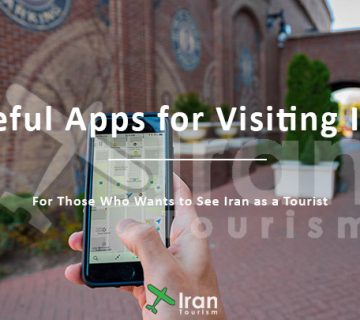With its superior features, the tourism industry is considered a dynamic sector with bright futures. Investment in this industry is increasing in all countries with tourist attractions. Today, attracting foreign tourists has become increasing competition among institutions involved in the tourism industry.
This industry not only plays a role in advancing the national economy and foreign exchange earnings, but it is also a clean and pollution-free industry that creates new jobs.
On the other hand, the growth of tourism, in addition to having cultural, natural, and historical attractions, etc., requires the city’s infrastructure. In this Iran tourism article, we discuss the situation of water, electricity, gas, etc., in the towns and villages of Iran.
Join the Iran travel guide center to learn more about levels of urbanization in Iran.
Urban Developments and Levels of Urbanization in Iran
Iran is one of the developing countries where urbanization’s growth rate has changed rapidly in recent decades. Levels of urbanization in Iran accelerated with the discovery of oil resources and its extraction from the thirteenth century.
On the other hand, with its city-centered and urban-oriented policies, the government has continuously taken steps to strengthen and develop the urban city. In return for rural and nomadic life, it has, directly and indirectly, supported the city’s life culture and urbanization.
Below, we investigate the levels of urbanization in Iran from different aspects.
Electricity Situation in Iran
One of the important aspects of the levels of urbanization in Iran is the situation of electricity supply in different regions.
Iran is the 16th largest producer and 18th largest electricity consumer globally. Iran’s electricity industry in 2017, with 265 billion kilowatt-hours of electricity, ranked 16th in the world and the second-largest in the region after Saudi Arabia.
This year, China and the United States accounted for the largest electricity generation in the world, with 6142 and 4088 billion kWh, respectively.
Iran is almost in the same group as Taiwan, Spain, Turkey, and Australia in electricity production.
According to Iranian statistics published in February 2017, more than 99% of Iranian villages had electricity. A case in which Iran is ahead of the rest of the world and while according to the United Nations, the rural population with electricity in the world is about 76 percent, this figure has reached 99.7 percent in Iran.
Water Situation in Iran
Another effective aspect of increasing urbanization in Iran is the water situation in Iran. Access to safe and hygienic water is essential for countries to have a good life. According to the Deputy Minister of Energy, about 63% of cities worldwide have a water supply system, close to 100% in Iran.
Accordingly, in 2018, equivalent to 1511 villages with a population of 1.2 million have benefited from safe and sustainable drinking water in Iran. More than 85% of Iranian villages currently have access to drinking water.
The Gas Supply Situation in Iran
The Iran natural gas industry is the most revolutionary in Iran Because all the development of this industry has been done after the revolution. Today, the gas industry is one of the most self-sufficient industries in Iran, So most of the equipment used in the gas industry is supplied in the country.
Currently, 1139 cities supply gas and gas to 27 thousand 338 villages. 97% of the country’s urban population and 82% of the rural community are under Iran’s natural gas network coverage, so 93.6% of the total population has Iran’s natural gas network coverage.
The Situation of Mobile Antennas in Iran
But the last and one of the most significant aspects that increase levels of urbanization in Iran is the situation of mobile networks. According to Google, the world’s total population at the end of 2018 was close to 7.53 billion people.
There are more than 7 billion active mobile phones worldwide. Still, the total number of devices connected to mobile networks, including objects, cars, and other inhumane devices, is nearly 50 billion.
So, for every 1076 people worldwide, one BTS antenna is installed. This situation is better in developed countries; there is 1 BTS antenna for fewer users, and vice versa in countries lagging in mobile network development. Maybe 1 BTS antenna is installed for every few thousand people.
According to the reports of the Radio Regulatory Authority of Iran, about 60,000 physical BTS antennas have been installed in Iran, the total number of antennas of three mobile operators in the country. According to Google, Iran’s population is about 81.16 million. So, the number of BTS antennas in Iran is one per 1352 people.
Of course, the situation of Iran in BTS antennas is more favorable than in many countries in the world. Some of the world’s most famous countries have just been able to expand their 3G network across their land and allow their citizens to connect to data.
Mobile operators are continually trying to increase the number of BTS antennas and want more towers installed in cities, towns, and villages, parallel with the growth of electricity, gas, and water networks.
Conclusion
One of the most important uses of cities today is the provision of modern tourism services, which has marked a new era in human social and cultural interactions.
Urban centers due to the accumulation of civic institutions and social infrastructure, can be a good place to attract domestic and foreign tourists.
Considering the high levels of urbanization in Iran can increase the number of foreign tourists entering Iran, which is good news for the country’s tourism industry and can give new life to this industry’s economic productivity.




No comment